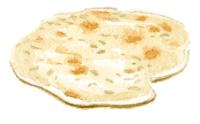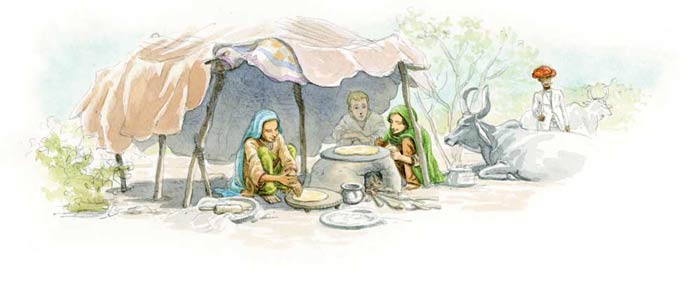Paratha

Form: Flat bread
Country of origin: Pakistan
What distinguishes it from other methods of bread making: Contains ghee (clarified butter)
Category of bread: (2 and 7) In the flat bread category, which includes different versions from all over the world, paratha sets itself apart because it contains fat
Particularity: The favorite bread of Pakistanis
Ingredients: Wheat flour; ghee (clarified butter); salt; water; optionally mint leaves; cumin seeds; paprika

Pakistan
Variations around a theme. There are a thousand one ways to make this wheat dough griddlecake, containing no leaven, but made with ghee or clarified butter. Pakistani women even more than Indian have expressed the widest of creativity with endless variations, using the same unchanging basic formula: a circle of dough laid on a concave iron plate licked by the flame or heated by the embers.
It could therefore be said that paratha, in a certain way, was born in Pakistan, on August 14, 1947. This is not entirely true, since at the time of the partition, the Pakistanis took paratha, which came from the grand pantheon of Indian breads, straight to Pakistan. Originating in the region of Punjab in India, paratha is nonetheless the bread that the Pakistanis adopted as their own, as part of their national identity. You can’t visit Pakistan without eating it. In one form or another, it is found on all Pakistani tables, with all snacks, teas, and light meals, as well as in all countries where the Pakistanis have immigrated (Malaysia, Mauritius, Singapore, Myanmar, etc.).
The basic form is therefore a chapati dough, to which ghee is added. Once this dough is stuffed, the possibilities are infinite. For example, you have the aloo wala paratha, the most popular of all, which is stuffed with potatoes, or the ghobi paratha, stuffed with cauliflower and other vegetables. Then there’s the dal paratha, filled with crush dal (a thick lentil or other pulse soup), or with grilled chickpea flour (sattu); qeema paratha, filled with spicy ground meat, or the anda paratha stuffed with eggs. The list goes on. It is also eaten rolled, accompanied by a lassi, a type of yogurt-based drink. It can also be sugared, like a French crêpe.

